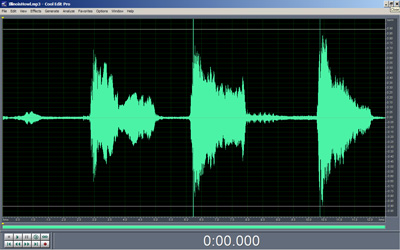One of the most interesting areas of research in wildlife is sounds. Whether it is different frogs croaking, bird singing or coyotes howling we can make recordings and do computer analysis of these sounds.
In the area of bird identification when so many times the birder is not able to see the vocalist because of heavy brush, bird songs and calls have become a major resource. CD collections of American birds are inexpensive. Examples are:
Stokes Field Guide to Bird Songs
A Field Guide to Bird Songs: Eastern and Central North America (Peterson Field Guides)
The major institution that is deeply involved with bird sounds is:
When it comes to mammal sounds it is more difficult. Darkness does not lend itself to easy identification of sounds. Most birds are active in the daytime (owls and nighthawks and a few others being the exception). The mammals are a different story. Although all mammals are seen at different times of the day, other than the squirrel family, most are chiefly active in the night.
Numerous websites have collections of mammal sounds:
Guide to Animal Sounds on the Net
Hunting websites often carry large collections of the more common mammals:
Varmint Al’s Coyote Hunting Page
Bioacoustics
According to Wikipedia:
Bioacoustics is the study of how animals use sound for communication and echolocation.
Major institutions that are involved in bioacoustics include:
Texas A & M University-Corpus Christ
Cornell Lab of Ornithology
Bioacoustics Research Program (note: also includes mammals)
Sound Analysis
The advent of computers has allowed scientists and amateur alike to study sounds in an objective manner. It is not enough to say “oh that sounds like a coyote or that is just a mountain lion screamingâ€. It needs to be recorded with high quality field recorders and microphones. It then needs to be analyzed by computer software.
There are many different programs for evaluating sounds:
For a longer list of programs check out:
Sound Analysis Software for bioacoustics
A Quiz and a Challenge:
What is this animal? I recorded this sound during April and May in Central Illinois along a creek in a mixed oak-hickory forest.

To answer the challenge one must be able to have a recording that is good enough quality to be analyzed. A poorly recorded and distorted recording has no value. To be considered the same animal the recording must:
1. Display the same pattern.
2. Display the same resonant frequency and overtones.
If you think you know what this animal is please send me a recording for analysis. My email address is: stancourtney@hotmail.com
For a further discussion on this howl please see:
and for all the recordings of this howl see:
Thanks so much for posting this excellent presentation of your Illinois howl recordings that you have collected at various times and locations.A likely first impression of the howl is that it is canine (wolf, dog, coyote or a cross-breed). But anyone who takes the time to compare the Illinois howls with the many recordings of such known animals at the provided links should reach the conclusion that the Illinois howl defies comparison to such known animals and is indeed being made by some as yet unidentified animal.